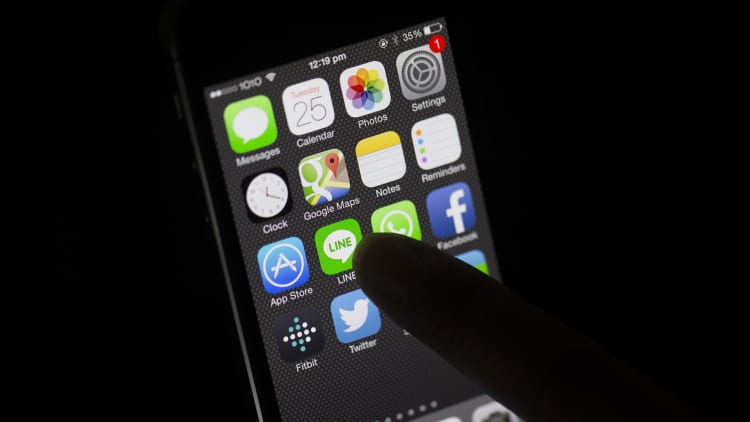It's a big year for the iPhone, literally.
At a choreographed , the entire tech world expects Apple to show off a device with a 4.7-inch screen, and possibly one with a 5.5-inch screen.
In a reversal of the stock's collapse two years ago, Apple has run up to all-time highs in anticipation of the bigger iPhones. It's a risky bet, because investors tend to cool on Apple in the fall after we actually see the long-rumored products.
This year, though, could be different.
Three factors suggest this could be an unusually strong year for iPhone sales. One, the upgrade-eligible pool is the largest it has been in years. Two, there's pent-up demand for a larger iPhone. And three, Apple's fortunes in China seem to have improved at just the right time.
First, it's important to consider the pool of consumers who are eligible to get a new iPhone.

In the past, that pool was limited to people whose two-year contracts were up, or whose carriers would allow them to upgrade early. Last year in the U.S., that pool turned out to be smaller than in years past because carriers cut back on allowing early upgrades in an effort to protect their profitability. (Wireless carriers lose money up front on subsidized phones, then make it back over the life of the contract.)
Read MoreIs bigger better? What iPhone buyers have to say
But this year, carriers have figured out a work-around: New early-upgrade plans that essentially amount to phone lease agreements. In exchange for the option to upgrade yearly, customers agree to keep their phones in good working order and turn them in to the carrier when they're done. Customers also pay a higher monthly rate.
How popular are these early-upgrade plans? Very, according to a June report from research firm NPD. Upgrade plan enrollment more than quadrupled between September 2013 and the end of March, going from 7 to 31 percent.
The reason is perfect for an iPhone launch: "Keeping up with the latest technology was cited by 84 percent of smartphone owners as the most influential reason why they signed up for an early upgrade plan," NPD wrote in June. "Money was next on the owner's mind, with 62 percent saying being able to finance the phone in monthly installments influenced their decision."
Then there's the question of pent-up demand for a larger iPhone. It's hard to pinpoint how many iPhone owners have avoided upgrading because they want a bigger phone, or how many big-phone aficionados would switch from Android to iOS if they had the option. (Some iPhone customers still insist that size is not that important.)
We do, however, have market share and growth data to lend perspective. According to Canalys, 34 percent of phones shipped in Q1 2014 had screens 5 inches or larger. Perhaps more important, that segment grew 369 percent over the same quarter a year earlier, faster than any other size category. All of that, combined with the iPhone's perennially strong customer satisfaction numbers, suggest that Apple should gain market share with larger offerings.
Which brings us to China. The market for larger phones is especially robust there, in Apple's most prized growth market. Apple also happens to be enjoying a banner year in China. Not only has the company signed China Mobile, the nation's largest carrier, but it has also managed to rein in the grey market where iPhones sold without Apple maximizing its profit. Finally, China has its own dynamic of shifting subsidies. Chinese government regulators are reported to have instructed carriers to cut back on subsidizing smartphones. The main likely effect of that? It will shift sales to cheaper, homegrown brands like Lenovo and Xiaomi.
But don't be surprised to see a secondary, opposite effect: Higher-priced phones from premium brands (Apple, mainly) could reassert themselves among wealthier consumers as a status symbol. It arguably carries more cachet to be seen with an iPhone when fewer of your peers can afford one.
—By CNBC's Jon Fortt



